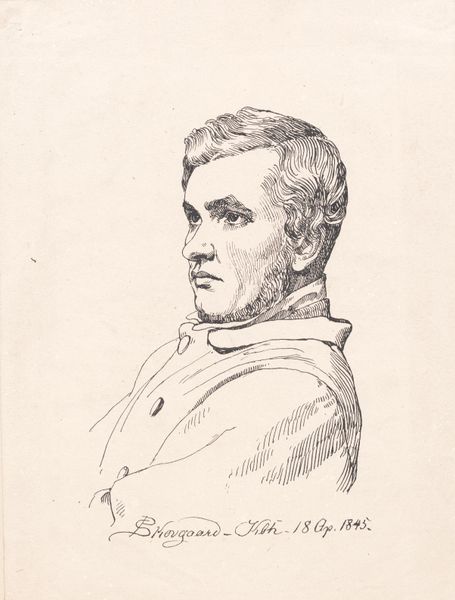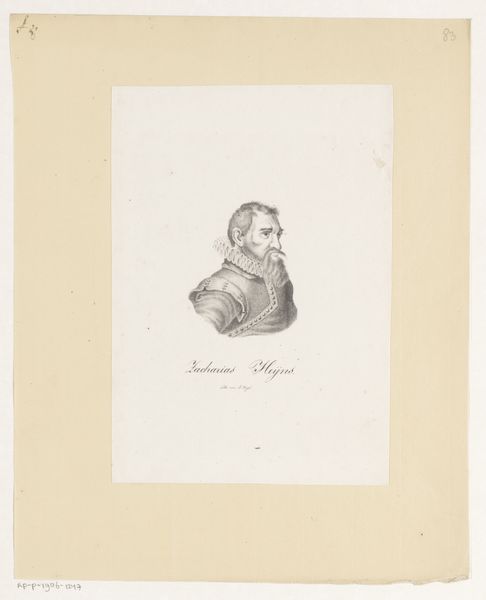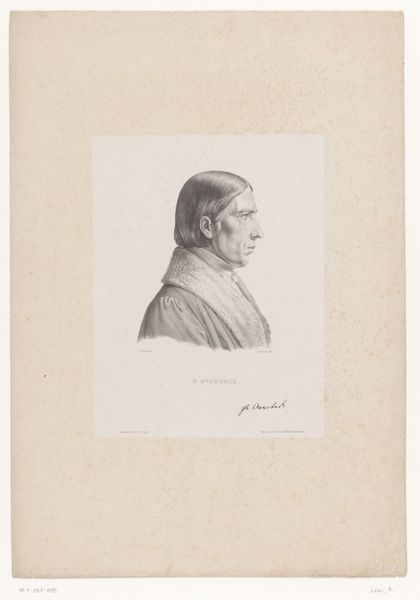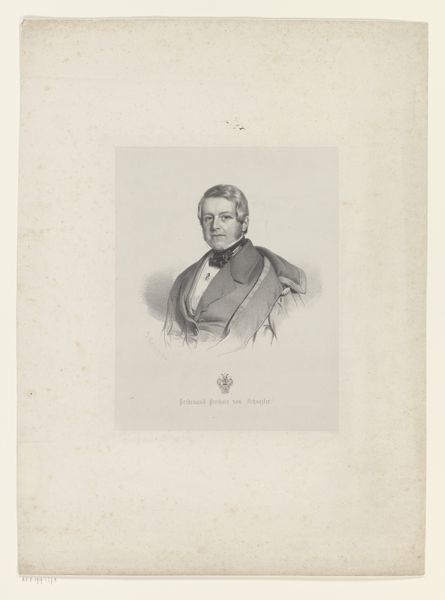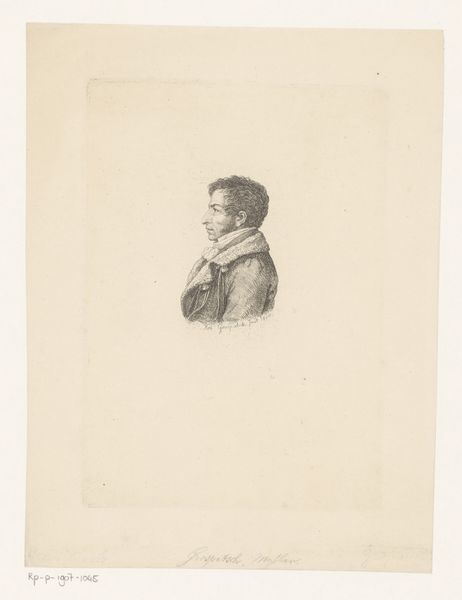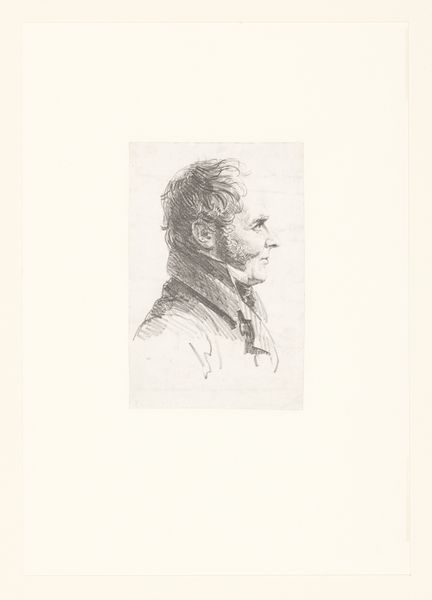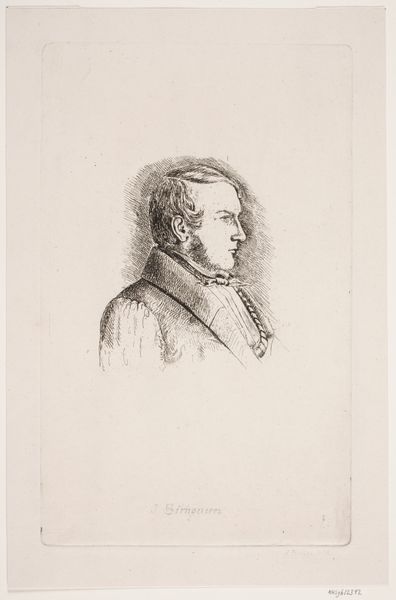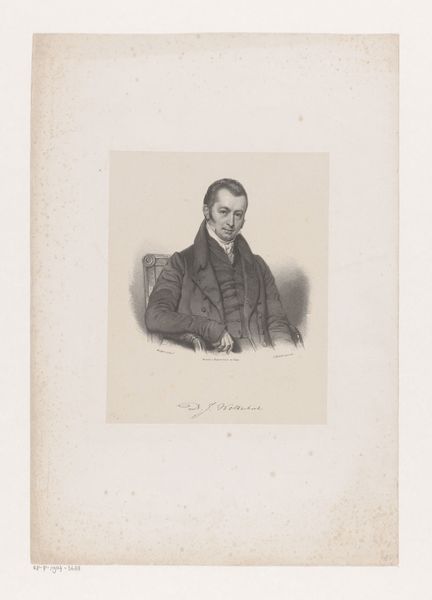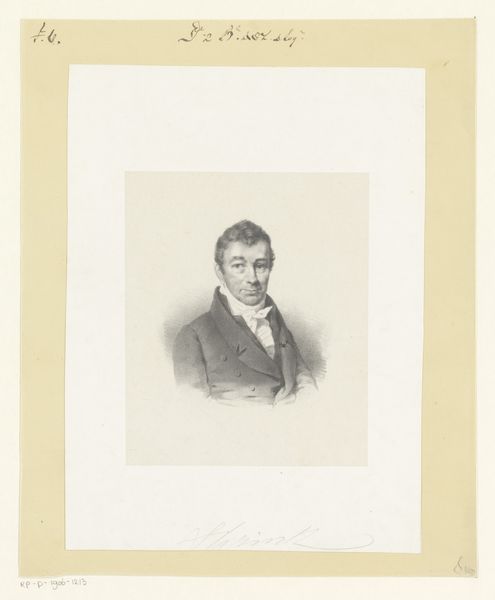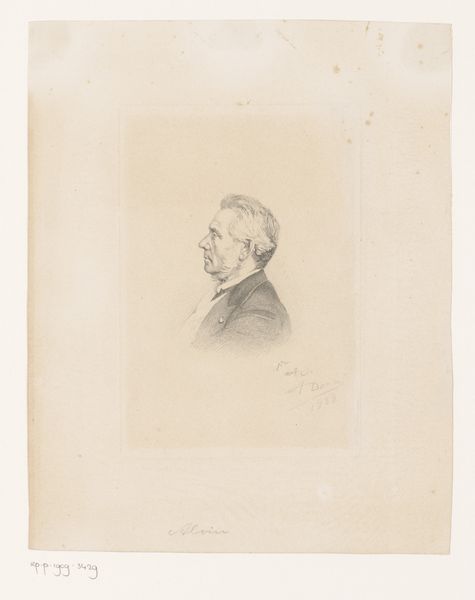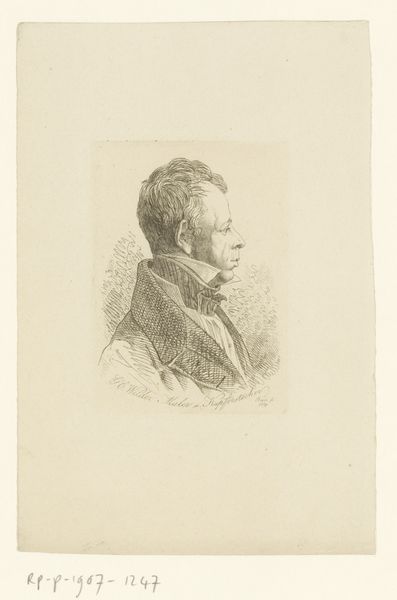
Dimensions: 278 mm (height) x 200 mm (width) (billedmaal)
Curator: Welcome. We are looking at a drawing entitled "Maleren J. Th. Lundbye" dating approximately from 1870 to 1923 by F. Hendriksen. Curator: This portrait has a preliminary feel to it, almost like a study. You can see the artist really working out the planes of the face and the folds of the sitter's coat through very economical lines made using graphite. Curator: Absolutely, there's an intimacy in its simplicity. Lundbye, the sitter, was himself a painter, aligned with the Danish Golden Age. This era was marked by burgeoning national romanticism— artists like Lundbye explored the relationship between Danish identity and landscape painting. It makes me wonder about the dynamic of portraiture during times of political change or national aspiration: how identity and representation intersect. Curator: Knowing Lundbye was also a painter explains a lot about this piece. The directness in the line work—suggests an artist depicting another artist. No time wasted on elaborate flourishes. It’s about capturing likeness and essence through minimal labor, I’d say. Curator: Yet even in those sparse lines, there's the subtle crafting of image and masculinity. Notice his folded arms: this could represent introspection but also strength or guardedness in terms of portrayal of 19th century men. This Romantic sensibility often glorified a masculine ideal, particularly connected to the land. This artist—Hendriksen—depicts another artist wrestling with the very same visual questions. It all gets very recursive. Curator: Recursive indeed. Look at the subtle way light is indicated by shading. Even the printing technique speaks of reproducibility, distribution and consumption of the image as commodity beyond art. Who could acquire these portraits and what value would the portrait hold for them? That impacts the meaning of this work, especially if printed drawings were widely circulated beyond the fine art market. Curator: That tension between individual portrait and wider distribution definitely complicates narratives of authenticity. The circulation impacts context! Overall, viewing the image and its backstory, and understanding its social meaning makes the drawing so intriguing, revealing layers that might have been concealed otherwise. Curator: Right, focusing on material processes— like printmaking techniques or graphite qualities— helps me think about distribution of artworks in a commercial and a cultural environment during this period. Let us step to our next artwork...
Comments
No comments
Be the first to comment and join the conversation on the ultimate creative platform.
